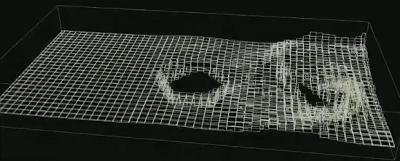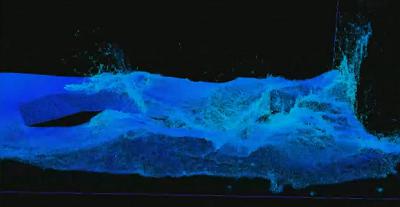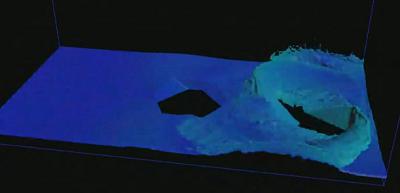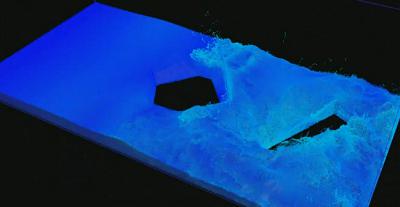Inside the fluidtank_fluid node is a network that combines the initial set up of your tank with the simulation. Once the simulation is done, this node collects the fluid particles, sets up a material, and creates some nodes for surfacing to finish the effect. There are also new nodes in Houdini 15 that automatically add compression and the new fluid surfacer.
The Fluid Compress geometry node compresses fluid simulations, before saving the data to disk. The compression is generally lossy: FLIP particles will be culled below the specified depth, and volume bandwidth is limited by zeroing out values. However, SOPs such as
Whitewater Source and
Particle Fluid Surface are designed to detect compressed fluid input and regenerate any required missing data.
The Pack Particles parameter will partition FLIP particles into tiles, which are stored as packed primitives. These are then written to disk and subsequently delay loaded by the Delay Load Geometry parameter on the comressed_cache node. If you display the compressed_cache node, you can see a bounding box view of tiled points, which you can scrub through quickly. This is very useful for getting a rough preview of large simulations.

There is also a surface_preview node that provides a preview of your compressed simulation. There are 3 options for previews in the Convert to parameter on the Particle Fluid Surface node.
Particles
Displays the very thin layer of particles at the top of the fluid surface. This option displays only the particles retained by the Fluid Compress node. However, this option might not be the most useful for flipbooking, since you can see through the thin layer of particles.

Compressed Fluid Surface
Displays the surface field from the FLIP simulation. You won’t get see all the surface detail, but this option is useful for previewing whitewater sims or secondary sims to determine roughly where the splashes will be. This option is also often the fastest to display; as set up by the shelf tools it will avoid loading any FLIP particles from disk.

Particles and Compressed Fluid Surface
Displays particles on the top layer, and an inset version of the surface field. This option gives a relatively accurate display of the uncompressed FLIP simulation, and is the most useful for flipbooking.

Tip
You can modify the Bounding Box parameter on the Regions tab to isolate a smaller area of the surface to preview.
You can also do this by enabling the Camera section of the Regions tab, which will clip the fluid surface to the specified camera’s frustum. It’s useful to use the camera window to isolate the part of the simulation you're working on, or for situations where you only want to load certain particles because a camera will be sweeping over a large scale simulation.